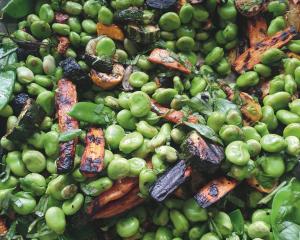They are assuming that I would have another glass of the best wines, but that is, unfortunately, not often the case so I thought it was time to explain my tasting procedure.
Wine samples arrive from producers and distributors and my husband Lloyd keeps track of them in the cellar.
Every week, or sometimes twice a week (I try to keep a couple of columns ahead) we'll decide what is to be tasted, depending on what variety there is most of, and what has been there the longest - sauvignon blanc and pinot noir are by far the most numerous.
Then he puts the bottles for tasting in brown paper bags, numbers them and pours glasses for me (and for himself).
We use Riedel magnums which are standard now in New Zealand wine competitions and I taste the wines, (spitting of course), making notes and rating them.
Often I revisit wines in a different order.
Then we discuss the wines and he reveals their identities.
When that is done I look up the information that came with the wines, note the price and any interesting winemaking details, and sometimes retaste the wine, especially those that haven't lived up to their reputation, or which have exceeded it.
Then we have dinner and try some of the wines with food - that can change the perception as some less assertive wines complement food better than big, powerful wines.
In the morning I photograph the bottles in daylight.
And as for the levels in the bottles, there are several reasons why they may vary: I may have used some in the cooking or we may have tried a fresh pour of a doubtful wine.
The next day I repeat the exercise, tasting the wines blind again, which is eye-opening when it comes to showy wines that fall apart, or tight young wines that open up and develop charm and poise, but it can also confirm my first opinion of over-priced or well-priced wine.
It's only on the third day that we actually sit down and enjoy a glass of wine - good young reds, rieslings, chardonnays and some sauvignons will still be delicious and maybe even better than they were when first opened.
Then I have to select the six of the 15-20 wines to review for the column, based on quality and value, and write the reviews.
Everyone has their own taste in wine and often professionals will disagree about certain wines, so it's a good idea to find a wine critic whose recommendations suit your own palate and follow their recommendations.











